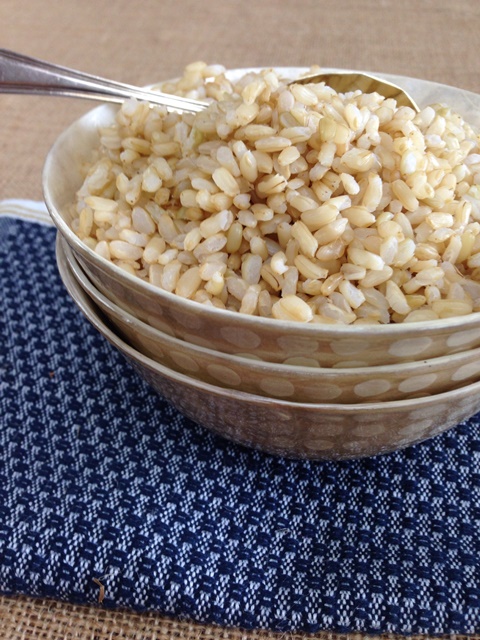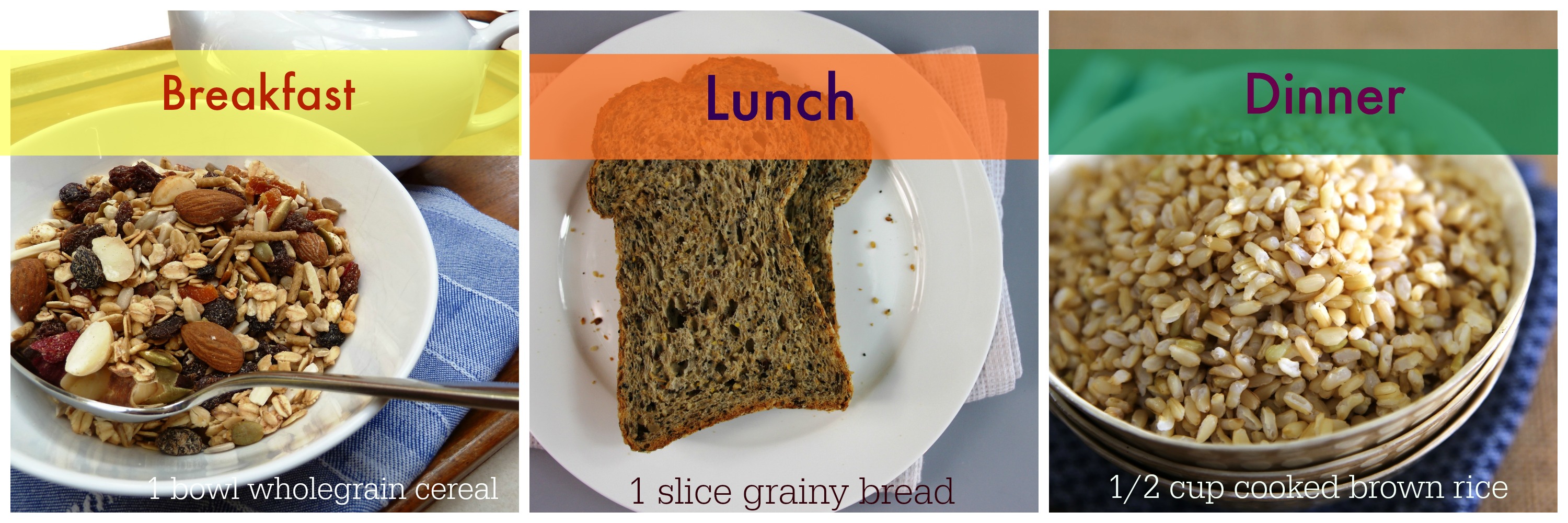How much whole grain should you eat ?

It’s no secret that whole grain and high-fibre breads, cereals and grains are what we should be eating. We know they boast plenty more B vitamins, iron, zinc, vitamin E, fibre and antioxidants than refined products. Yaddah yaddah. I know I sound like my mum. But they’re often chewier, denser, more hard-yakka to eat and sometimes not as delicious as their white, low-fibre cousins, are they? Ask my white-bread-lover husband!
So how much whole grain stuff should you eat? Do you have to eat ALL your grains in whole grain form?
Two ways to work out how much you need
There are two methods to estimating how much whole grains you should eat – grams of whole grain or serves of whole grain.
Method 1 - Grams of whole grains
According to the Grains and Legumes Nutrition Council, adults and children over 9 years of age should aim to eat at least 48 g of whole grains each day. (There is no upper limit.)
Young children need to increase the amount of whole grains gradually as they grow. For children under nine, the target to aim for is:
24 grams a day (for 2-3 years)
32-40 grams (for 4-8 years).
To reach the target of 48 g you could eat:
1 bowl of rolled oats for breakfast 30 g
and
2 slices of 100% wholemeal bread as your lunchtime sandwich 30 g
Total 60 g
OR
2 slices of 100% wholemeal bread as your lunchtime sandwich 30 g
and
1 serve (½ cup cooked) brown rice with your dinner 30 g
Total 60 g
(note figures only very approximate)
Personally I find this method too hard as it’s impossible to work out the grams of whole grains unless you know the formulation of the bread, cereal, muesli bar or slice. But it’s helpful to food producers and dietitians. Bakers and food manufacturers should check out the GLNC’s Industry Standard for Whole Grain foods and their Code of Practice for Claims here.
Method 2 - Serves of whole grains
The Australian Dietary Guidelines are vague, saying only to eat "mostly wholegrain and/or high fibre varieties" so not much help there. But guidelines from other countries such as the latest 2010 US Dietary Guidelines simply suggest you aim to make HALF the grain foods you now eat whole grain.
I find this is an easier method. It also means you don’t have to eat everything as wholegrain. Just half – which is good news for me, as I love toasted white bread on the weekend. Big treat. And it helps to find acceptable cereals, as many popular ones are in that grey area from 50 to 80 per cent whole grain, not always 100 per cent.
Of course, you can eat ALL your grain foods as whole grains if this suits your eating habits and your household. The more, the better and there’s no downside. However, while I’m happy to chew on grainy breads and enjoy bulkier cereals, I do baulk at 100% wholegrain pasta and heavy brown rice at each and every meal. A little white pasta and white fluffy Jasmine rice is a wonderful complement to many a recipe.
Here’s how this ‘half whole grain’ rule would look:
- For women and girls over nine, this means approximately 3 serves of whole grain foods a day.
- For men and boys over nine, with their larger intakes, this means around 4 to 6 serves.
- For younger children, this means 2 serves.
Obviously the amount of grain food you eat does depend on your individual energy needs. Bigger bodies and more active people need more fuel (kilojoules/Calories) and so would eat more food overall and hence more grains.
These numbers are based on guidelines - which suggest adults consume at least 4 to 6 serves of grain foods per day, while children under 8 should eat 4 serves.
 How to reach your three serves
How to reach your three serves
It’s not hard. To get your three serves, just reach for:
One way
a small bowl of muesli (1/4 cup) for breakfast (= 1 serve)
+
2 slices of grainy bread at lunch as a sandwich (= 2 serves)
OR Another way
a bowl of whole grain cereal (30g) for breakfast (= 1 serve)
+
2-3 whole grain crispbread at mid-afternoon e.g. Ry-King, Vita-Weet (= 1 serve)
+
1 small serve (1/2 cup cooked) of brown rice at dinner (= 1 serve)
OR Another way
1 slice of grainy bread toasted with eggs and grilled tomato (= 1 serve)
+
1 slice of wholemeal bread for lunch as the basis of an open sandwich (= 1 serve)
+
1 serve (1/2 cup cooked) of whole grain pasta or quinoa (= 1 serve)

What are whole grains?
Here are examples of whole grains you can buy to use in baking or cooking:
- Amaranth
- Barley – pearled, meal
- Buckwheat *
- Corn or maize – maize meal, grits, popcorn
- Millet puffs, whole millet flour
- Quinoa *
- Rye – whole rye flour, cracked rye grains
- Oats – rolled oats, oat meal
- Sorghum,
- Teff
- Triticale – cracked, flour
- Brown rice
- Black rice, wild rice, red rice (unmilled)
- Wheat - bulgur wheat, cracked wheat, wholemeal flour, freekah, farro, spelt, kamut
* Technically not cereal grains (Poaceae) but included here as they are consumed in similar ways. Many of the grains listed above are what are known as ancient grains. You can read all about my six favourite ancient grains in my post here.
Products derived from legumes (lentils, chick peas) or oilseeds (chia seeds, flaxseed, sunflower seeds, pumpkin seeds) are NOT considered whole grains.
How big is a serve of whole grains?
Here are the relative serves and weights of common whole grains:
- 1 slice (40 g) whole grain or whole meal bread
- ½ medium (40 g) wholemeal roll or flat bread
- 1 thin slice (40 g) pumpernickel or heavy dark rye bread
- ½ cup (75-120 g) cooked brown rice or whole grain pasta
- ½ cup (75-120 g) barley, buckwheat, bulgur, wild rice or quinoa
- ½ cup (120 g) cooked porridge or rolled oats or oatmeal
- ²/³ cup (30 g) whole wheat cereal flakes
- 2 (30 g) whole wheat breakfast biscuits
- ¼ cup (30 g) muesli
- 3 (35 g) whole wheat or rye crispbreads
- 1 small (35 g) wholemeal English muffin
- 3 cups popped popcorn
- 1 small (35 g) whole grain slice or bar (check for the first ingredient as wholemeal flour)
Figures courtesy of the Australian Government's Eat For Health website.



